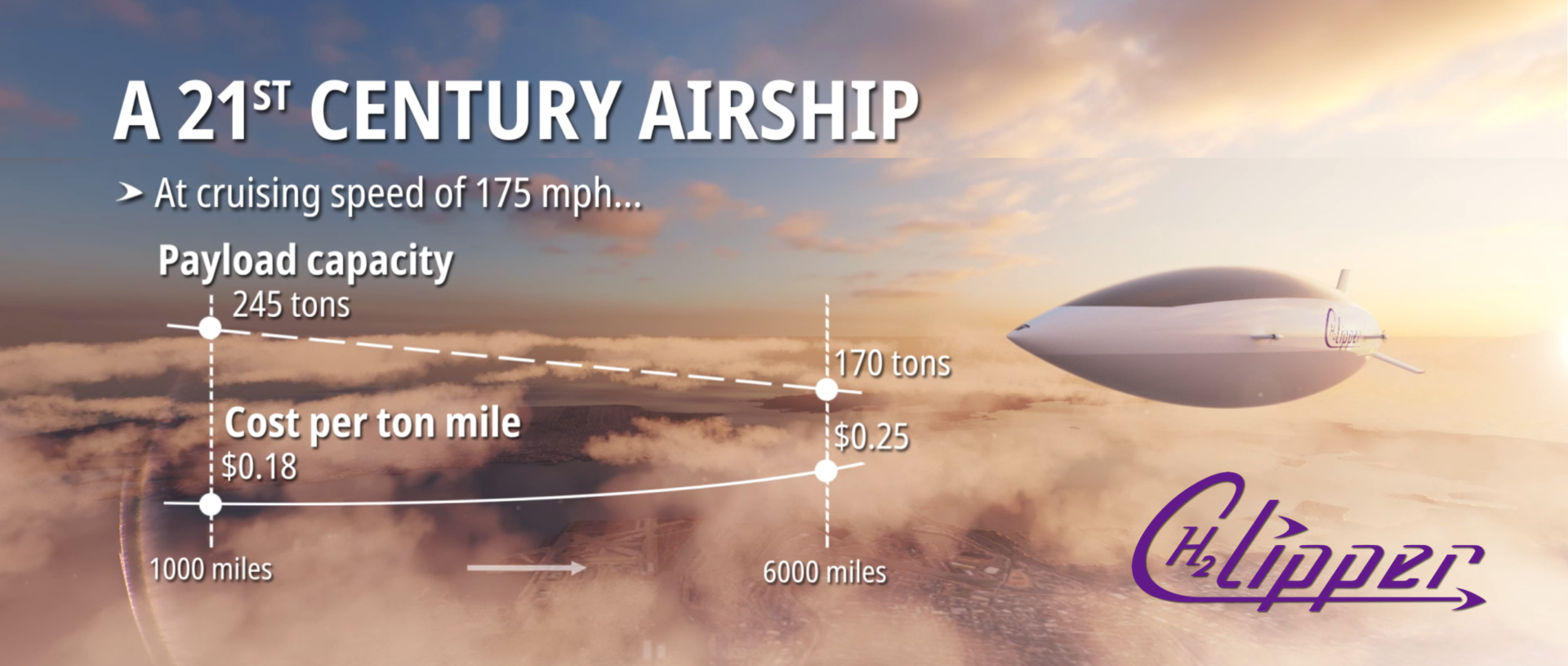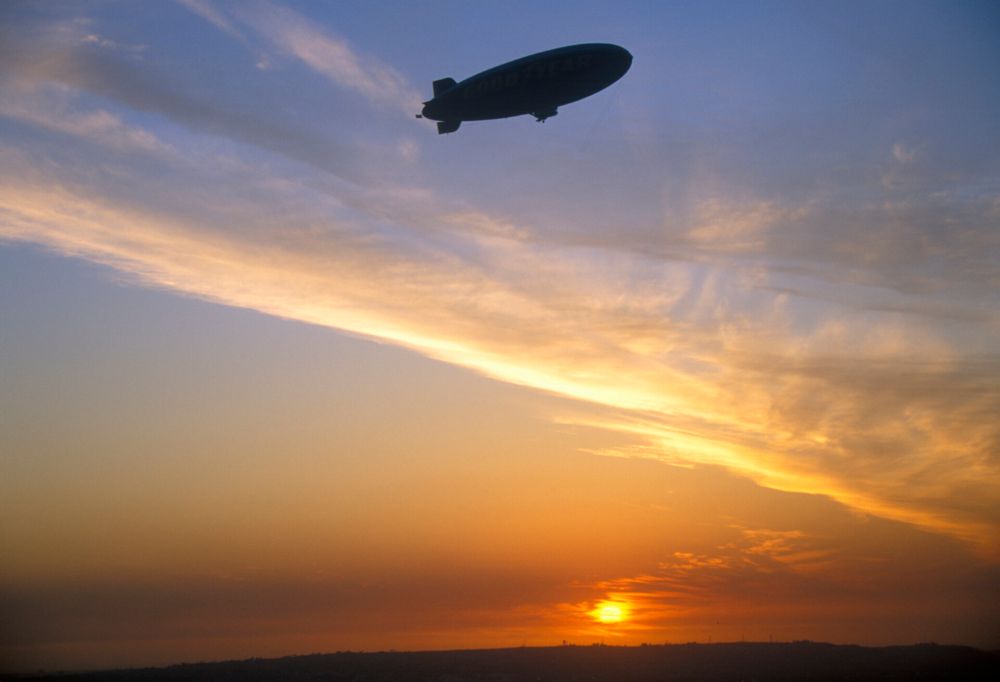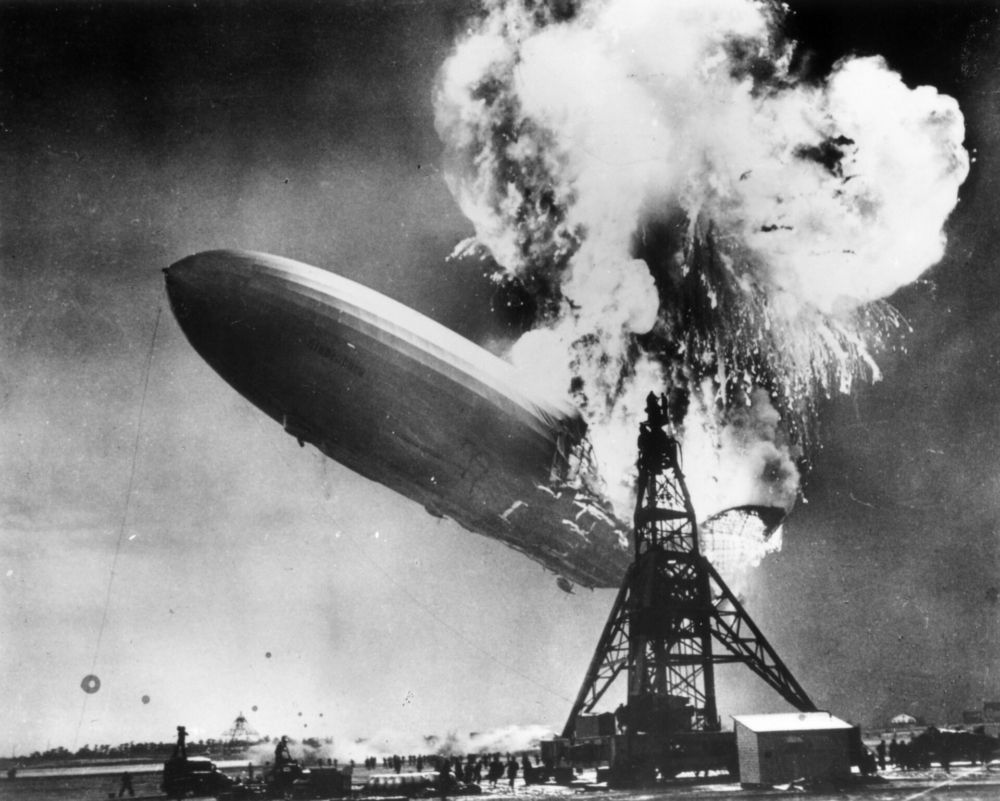One of the main challenges for the future of hydrogen as a fuel source for air travel is infrastructure. Be that for hydrogen-electric or propulsion architecture relying on liquid H2, the puzzle of transporting the gas safely to airports to fuel aircraft (another matter) needs to be solved. One company believes it is on the way - with a good old-fashioned dirigible. However, the inventors of the H2 Clipper say it is nothing like the airships of old.
Linking production and application
The H2 Clipper is an airship designed to transport pure hydrogen from where it is cheapest to produce to markets where it is needed to support green power projects. The dirigible itself will also be powered by green hydrogen to offer a carbon-free form of transportation and produce zero CO2 emissions.
The company behind the airship says that it will enable shipments of hydrogen and other cargo that will be seven to ten times faster than other modes of transport at a price that will be 70% lower than that of conventional airfreight.
It also attests that the H2 Clipper is uniquely suited to addressing the needs of an emerging hydrogen economy, providing a cost-efficient and dynamically scaleable approach to transporting the gas as demand grows over the following decades. It has trademarked it the 'Pipeline in the Sky'.
"...(It) is able to scale up through making additional daily trips until the recurring volume of hydrogen being transported justifies investing in the fixed cost of a pipeline or establishing a dedicated supertanker route, at which time the H2 Clipper can simply shift its services to another emerging production site and/or destination," the people behind the '21st-century airship' say.
In the sky by 2027 with the help of Dassault
The H2 Clipper will use hydrogen fuel cells coupled with electric engines to enable it to fly distances of over 6,000 miles at a speed of 175 miles per hour. It will have a lift capacity of 150 metric tons and a cargo area of 7,500 cubic meters. A detailed design and a prototype are scheduled for 2024. The target for having a fully-fledged airship in the sky has been set for 2027.
To support it in this endeavor, the H2 Clipper company has been selected for inclusion in the Dassault Systémes 3DExperience Lab innovation program. The program focuses on companies that envision a better and more sustainable way of life in alignment with the UN's Sustainable Development Goals. Projects include whale-safe fishing, detecting neurological pathologies through brain-wave devices, geoponic farming, and mobile charging devices for electric vehicles.
“The aerospace and aviation revolution is being driven by breakthroughs in the use of renewable fuels such as hydrogen, as well as advanced material science and engineering. We are pleased to support H2 Clipper to accelerate maturing these disruptive technologies to serve humankind,” said Frédéric Vacher, Head of Innovation at Dassault Systèmes.
The public image legacy to overcome
Of course, airships and hydrogen have history. Say 'zeppelin,' and most people's minds immediately conjure up images of the Hindenburg spectacularly going down in a sea of flames. The 1937 disaster essentially marked an end to the hydrogen-powered passenger-transporting dirigible era. Its powerful imagery aftermath will be a major obstacle to overcome in convincing the public that flying on hydrogen is safe. Perhaps a few years of high-speed zeppelins moving to and fro will contribute to shifting the general perception.



